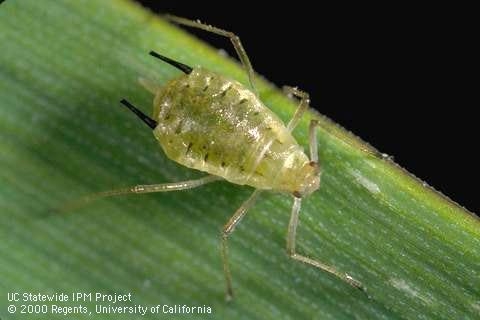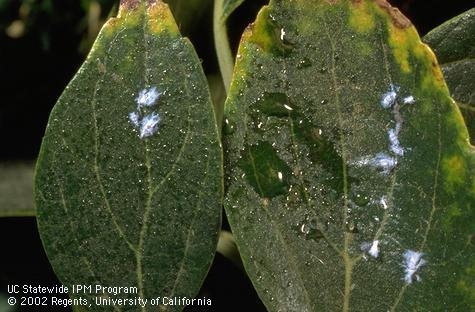If you are like me, you try to park your car under a tree in parking lots and on the street for some shade, especially with the hot weather we've had lately. Maybe you choose to park under a big hackberry tree, but when you return to your car, you notice droplets on your windshield and sticky stuff on the sidewalk, other cars, and the parking lot. What is this?
The sticky substance is called honeydew. The honeydew is excreted by a number of sap-sucking insects such as aphids, whiteflies, mealybugs, certain scale insects, and few others. On hackberry trees (widely planted in some cities), an insect called the woolly hackberry aphid produces a large amount of honeydew which drips from the leaves onto surfaces below.
If you examine the tree's leaves, you may see bluish-white masses that are actually this insect in disguise, coated in a pale wax that makes them appear fuzzy. In addition to the mess caused by the honeydew, you may also notice a black, sooty mold growing on the leaves. Although honeydew and sooty mold can be a nuisance, no long-term or serious damage to hackberry trees has been found, even after years of aphid infestations.
To learn more about the woolly aphid, see the UC IPM Pest Notes: Hackberry Woolly Aphid. If the sticky tree you park under is your own, the Pest Notes will help you find solutions to manage the aphid population should you choose to do so.
Another pest that also attacks hackberry trees and excretes honeydew is the citricola scale. As you can see from the photo, it may be very difficult to see when inspecting your tree. To learn about this pest, read the UC IPM Pest Notes: Scales.
Other shade trees can also get different types of aphids, scales, and other honeydew-producing pests. Find information about these other plant sucking pests and their damage and management at http://ipm.ucanr.edu/PMG/invertebrates/menu.aphidsthrips.html.
Author - Associate Director for Urban & Community IPM/ Area Urban IPM Advisor
Attached Images:

